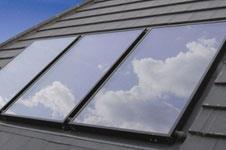The recently published ŌĆ£Zero Carbon for New Non-domestic ║┌Č┤╔ńŪ°sŌĆØ by the communities department has much to commend it, but is flawed by one large blind spot, says the Davis Langdon senior consultant
It assumes all sites are equal when it comes to meeting the requirements for on-site, renewable power generation.
This isnŌĆÖt how it is in reality. For example, average solar radiation varies by as much as 20% between south Devon and the Scottish borders. Wind generation varies even more. A report in late 2007 by BRE showed that turbines in built-up areas of London or Manchester produce about a 20th as much energy as an identical one in Wick in north-east Scotland.
Setting high targets without allowing for site conditions will result in wasted money and resources. It could even end up leaving some sites undeveloped: ones that might be very good in other environmental respects, such as having good transport links.
Far better to invest those resources on sites with good on-site regeneration potential. I propose that a more flexible approach be adopted, the ŌĆ£site potential factorŌĆØ. For example, a building atop a west-facing cliff in Cornwall might have a factor of 100%, meaning that it would be carbon zero, but a similar one on a north-facing slope of a steep wooded valley in Yorkshire might have a site factor of only 20%, meaning most of its power could come from off-site sources.
Achieving this will present challenges. The capital costs of developing those sites with a high potential factor would need to be encouraged by low cost ŌĆ£greenŌĆØ mortgages from a nationalised green investment bank, as well as feed-in tariffs.
Planners will need to acquire greater expertise in energy use and generation, and have greater influence to ensure that best use is made of land. For example, houses should be on south-facing slopes to benefit from solar gain, with north-facing slopes reserved more for industrial buildings.
Our whole way of thinking about renewable needs to return to an earlier age. Instead of thinking about what buildings should have, we should focus on making best use of the land. Our forefathers would site windmills and water wheels according to both the land potential and how the energy could be used.
Postscript
David Weight is a senior consultant at Davis Langdon.
For the latest QS jobs and career advice visit .



























No comments yet